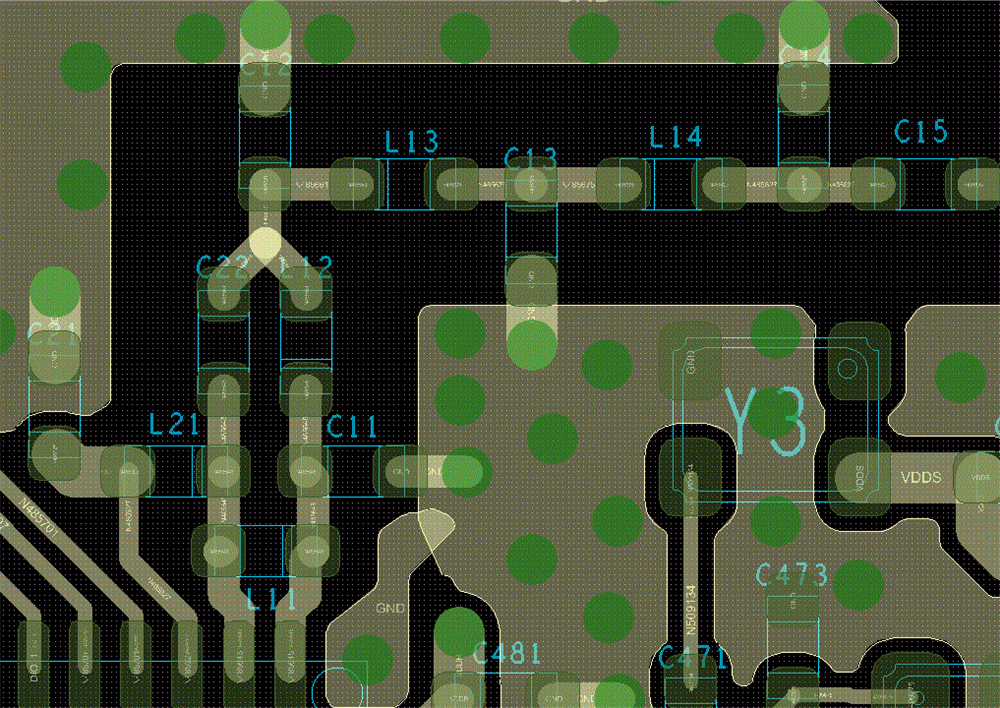SWRA640H December 2018 – May 2024 CC1310 , CC1312R , CC1314R10 , CC1350 , CC1352P , CC1352R , CC1354P10 , CC1354R10 , CC2620 , CC2630 , CC2640 , CC2640R2F , CC2640R2F-Q1 , CC2642R , CC2642R-Q1 , CC2650 , CC2652P , CC2652R , CC2652R7 , CC2652RB , CC2652RSIP , CC2674P10 , CC2674R10
- 1
- Abstract
- Trademarks
- 1 Reference Design
- 2 Front-End Configurations
- 3 Schematic
- 4 PCB Layout
- 5 Antenna
- 6 Crystal Tuning
- 7 TCXO Support
- 8 Integrated Passive Component (IPC)
- 9 Optimum Load Impedance
- 10PA Table
- 11Power Supply Configuration
- 12Board Bring-Up
- 13References
- 14Revision History
4.2 Balun - Sub-1GHz
It is important to keep the balun as close and symmetrical as possible with regard to the RF ports. Therefore, the trace length from the single ended port to each of the RF pins should be equal to achieve best amplitude and phase balance. For a good balun PCB layout, see Figure 4-2. An unbalance in the balun causes higher harmonic levels, especially at the 2nd and 4th harmonics. Another effect of having an unsymmetrical balun is reduced output power at the single ended side of the balun. Both component values and component placement is important to achieve best possible symmetry in the balun. Amplitude imbalance should be a maximum of 1.5dB and the phase imbalance a maximum of 10°.
To ensure optimal performance it is important to implement the same layout of the balun, match, and filter as in the reference design. Changing the placement of these parts might require tuning on the component values to obtain the desired performance. Tuning requires advanced RF skills and the proper equipment.
There must be an uninterrupted and solid ground plane under all the RF components, stretching from the antenna and all the way back to the ground vias in the chip exposed ground pad (EGP). There must not be any traces under the RF path.
 Figure 4-2 CC1312R Balun and LC Filter PCB Layout
Figure 4-2 CC1312R Balun and LC Filter PCB Layout